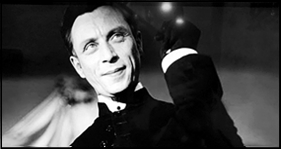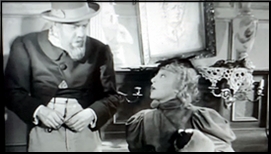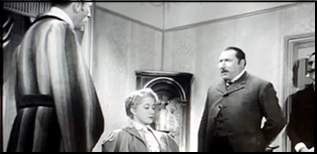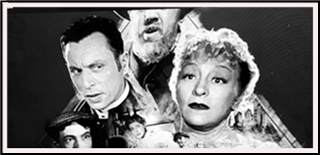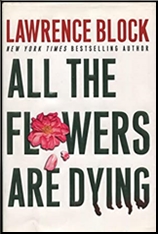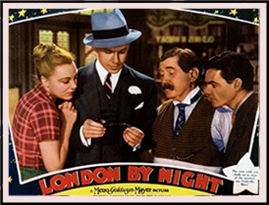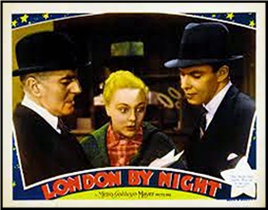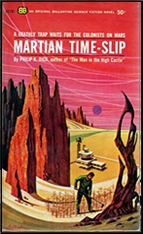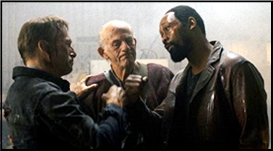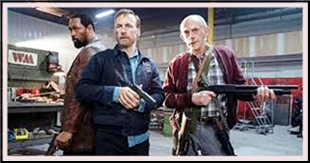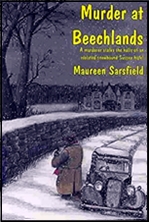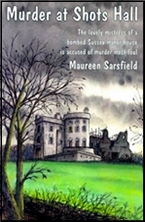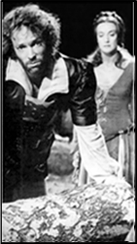Thu 3 Feb 2022
Reviewed by Mike Tooney: OLD-TIME DETECTION, Autumn 2021/Winter 2022.
Posted by Steve under Magazines , Reviews[6] Comments
(Give Me That) OLD-TIME DETECTION. Autumn 2021/Winter 2022. Issue #58. Editor: Arthur Vidro. Old-Time Detection Special Interest Group of American Mensa, Ltd. 36 pages (including covers). Cover image: A Rumpole Christmas.
This issue of Old-Time Detection continues to maintain the usual high standards for the publication, being replete with perceptive book reviews and features that would be of interest to any mystery fan.
“Mystery Reviews” by Jon L. Breen has Breen, one of the sharpest detective fiction critics, finding R. D. Rosen’s Strike Three, You’re Dead a most agreeable mix of baseball and amateur detection — “may be,” he says, “the ultimate sports mystery.” For fans of Wall Street mysteries, there’s a “more-than-adequate British equivalent” in David Williams’ Advertise for Treasure.
In “The Paperback Revolution,” Charles Shibuk covers a lot of classic detective fiction ground with short but pithy assessments of some of the works of Eric Ambler (Journey Into Fear, 1940), Leslie Charteris (The Saint in New York, 1935), Agatha Christie (The Moving Finger, 1942), Joseph Harrington (Blind Spot, 1966, and The Last Doorbell, 1969), Baynard Kendrick (Out of Control, 1945), Ross Macdonald (The Underground Man, 1971), Ngaio Marsh (Overture to Death, 1939), Ellery Queen (There Was an Old Woman, 1943, and Calamity Town, 1942), Dorothy L. Sayers (Murder Must Advertise, 1933), and Rex Stout (The League of Frightened Men, 1935, and The Rubber Band, 1936).
Dan Magnuson offers us his tribute to the late J. Randolph Cox, not only a close friend but also a Nick Carter expert, and, among other good things, the author of books about Walter Gibson and Flashgun Casey.
A fine addition to the issue is an “Author Spotlight” by Michael Dirda focusing on Edmund Crispin, more often than not one of the most delightful detective fiction authors of the Golden Age. You’re not likely to find a more comprehensive yet concise essay on Crispin than this one.
In the “Christie Corner” by Dr. John Curran, the foremost living expert on the works of Agatha Christie, comes news of the publication of a non-Christie book (The Invisible Host, 1930), the plot of which some would say Agatha “borrowed” for And Then There Were None (1939); Curran, however, is more than a little skeptical and offers good reasons for his doubts. Since 2022 marks the 90th anniversary of The Thirteen Problems (USA title: The Tuesday Club Murders), a publisher has decided to “re-imagine” Miss Marple, even commissioning some non-crime writers to do the bloody deed — I mean, give us their interpretations of the character. Curran finishes by briefly noting a computer game featuring Hercule Poirot and yet another scrambled up short story collection “culled from throughout Christie’s career.”
This issue’s fiction selection is T. S. Stribling’s “The Mystery of the Choir Boy” (EQMM, January 1951), in which Dr. Poggioli gets involved in a scheme meant to hoodwink the public but which culminates in murder.
“‘Count the Man Down,’ A Nero Wolfe Pilot” by Bruce Dettman illumines the experimentation that Hollywood in the ’50s was performing in adapting well-known — meaning “hopefully it’ll make money since everybody’s heard of it” — quantities to the small screen. Inspired by the huge success of Perry Mason, the producers tried — and failed — to bring Rex Stout’s famous detective and his “assistant” to life (“pretty much a botched effort”). Only the actor playing Archie gets a thumbs up from Dettman, a rookie thespian who in a few years would become a TV icon.
“The Life and Death and Life of Sherlock Holmes” by Richard Lederer compactly outlines the career of the Sage of Baker Street and the adience-abience dilemma that confronted his literary creator.
Then come more in-depth book reviews of John Mortimer’s A Rumpole Christmas (2009), reviewed by Ruth Ordivar, a collection of five stories whose “quality more than makes up for the thin quantity”; Anthony Berkeley’s Murder in the Basement (1932), reviewed by Harv Tudorri, in which Roger Sheringham seeks “to get to the bottom of a problem and to prove it to my own satisfaction”; Agatha Christie’s Crooked House (1949), reviewed by Sheila M. Barrett, a story whose “elements are laid forth as the reader might expect from Christie’s expert hand”; Jon L. Breen’s Listen for the Click (1983), reviewed by Arthur Vidro, a sports/mystery novel that works just right; and Christie’s Murder in the Mews (1937), reviewed by Trudi Harrov, containing four stories that collectively manage to “hit the spot.”
“The Non-Fiction World of Ed Hoch” has the all-time master of the short detective story “Seeking the First Mystery Magazine,” from possible candidates like Old Cap. Collier Library and voluminous Nick Carter publications in the late 19th century through Detective Story and Mystery Magazine and, of course, Black Mask in the early years of the 20th century. As Hoch tells us, however, designating what was actually the first mystery magazine could come down to a matter of categorization.
“The Readers Write”: “Thanks for continuing to do this labor of love for all of us who enjoy the Good Old Days!”
. . . and finally there’s the Puzzle Page—and it’s a doozy.
___
If you’d like to subscribe to Old-Time Detection:
Published three times a year: spring, summer, and autumn. – Sample copy: $6.00 in U.S.; $10.00 anywhere else. – One-year U.S.: $18.00 ($15.00 for Mensans). – One-year overseas: $40.00 (or 25 pounds sterling or 30 euros). – Payment: Checks payable to Arthur Vidro, or cash from any nation, or U.S. postage stamps or PayPal. – Mailing address: Arthur Vidro, editor, Old-Time Detection, 2 Ellery Street, Claremont, New Hampshire 03743.
Web address: vidro@myfairpoint.net
